Harz Mountains of Germany Part II
In the last blog post, you saw that we visited a few towns in the Harz Mountains region of Germany and that I wrote quite a bit about our stop in Quedlinburg, whose old town is part of a UNESCO site.
The town of Goslar, where we based ourselves for the weekend, wowed me even more than Quedlinburg it and it’s part of a UNESCO site as well.

Quedlingubrg was impressive with its 2,000-plus half-timbered houses, but Goslar has about 6 times that amount.
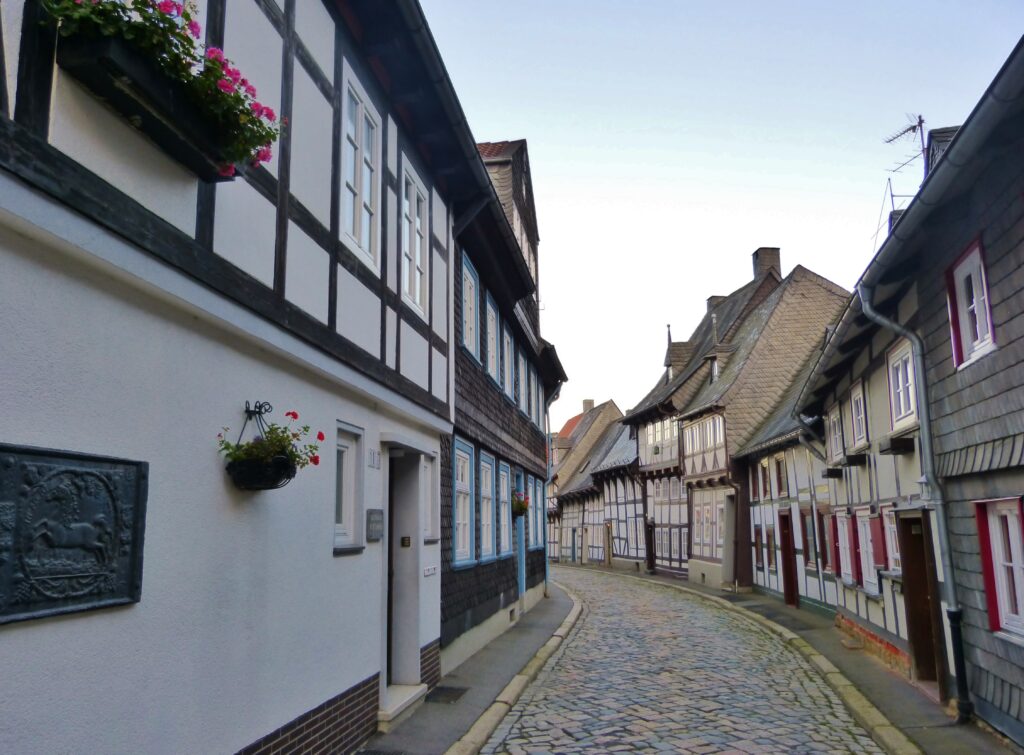
One of the first buildings you notice at Goslar’s Market Square is not even a half-timbered building.
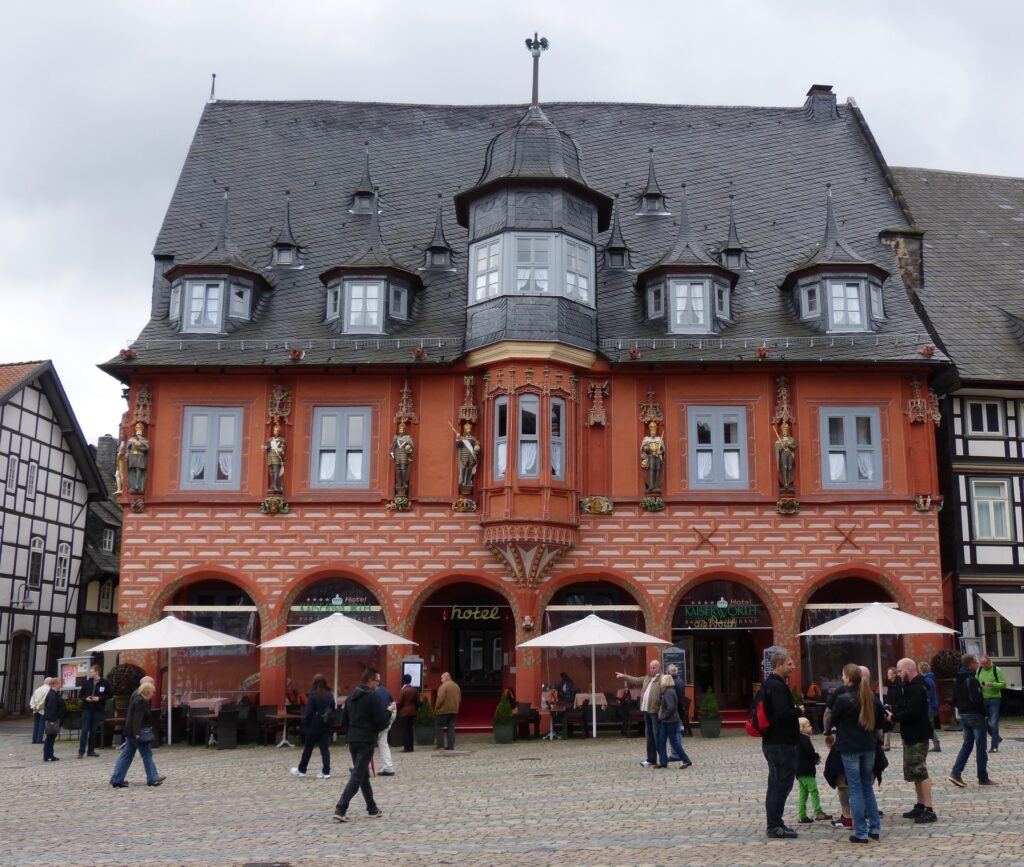
It was the former hall of the cloth merchants guild and it was built in 1494.
It’s noticeable not only for its color but for this little guy on the corner of the building.

It’s called the Dukatenmännchen and from ground level, you can tell that he’s pulling his butt cheek over to, um, have a bowel movement.
What I couldn’t see until I enlarged the photo, though, is that he also appears to crapping gold coins.
And yes, you can clearly see his scrotum. Oh those crazy Germans.
Also of note on the Market Square are both this fountain from the 12th century and the building behind it.

The fountain is topped by an eagle, the symbol of Goslar.
The building behind the fountain is the town hall that was built in the 15th century.
You can go inside and watch a little film about the history of Goslar, but the main attraction in the building is the former council chamber room that is filled with wood panel paintings from the16th century.
Unfortunately you can’t actually go into the room. You can go into this little sort of enclosure where you can kneel down and tilt your head to see the panels through glass.
The best you can do in terms of photos is to take one of another photo that’s in the town hall.

You can see how detailed the paintings are and you should also be able to make out the intricate wood scrolling in each panel.
Our next stop was the St. Cosmas and St. Damian church, also known as the Market Church.
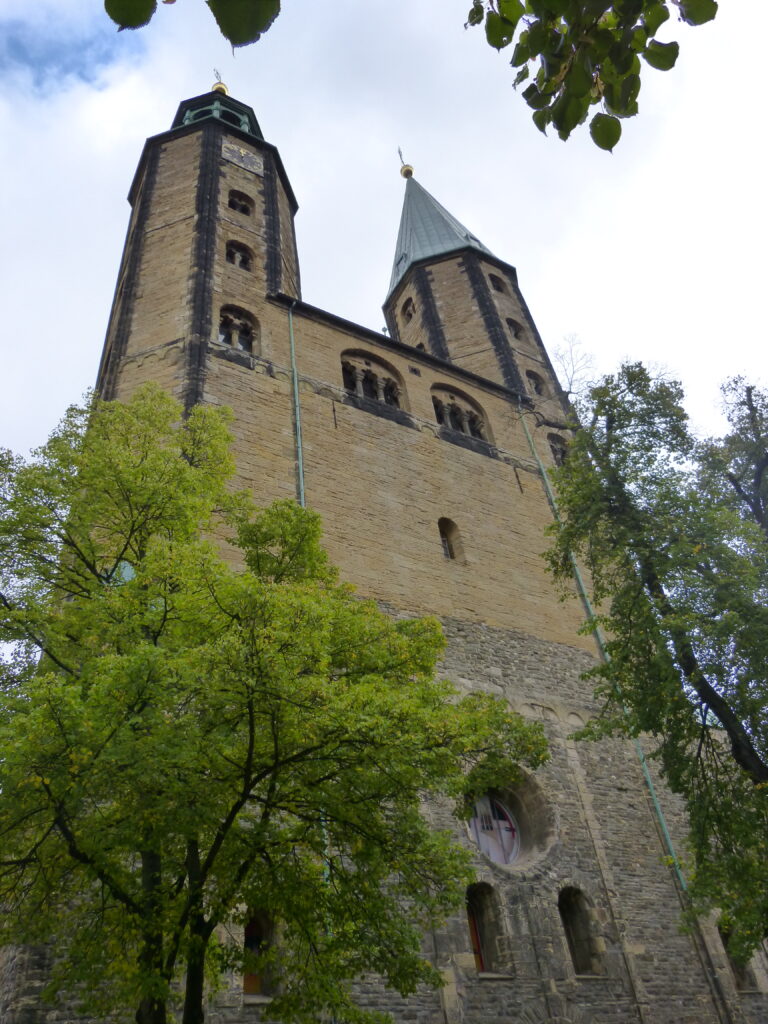
Notice that the two towers (hey, that sounds like a good name for a book!) are different from each other. You would think that information in regards to this would be easy to find, but it isn’t. It appears that the northern tower was built in it’s current (and different) form after a fire in 1589. A fire in 1844 destroyed the roof and both towers, and they were once again rebuilt.
On display in the church are these little Romanesque stained glass panels.

They date from the year 1250 and the minerals used to pigment the glass came from the nearby Rammelsberg mountain
On our way to a place called the Zwinger, we walked along the former town fortification and I decided to play around with a black-and-white photo.

I kinda like it – what do you think?
The Zwinger, the fortified tower seen below, was built in 1517.
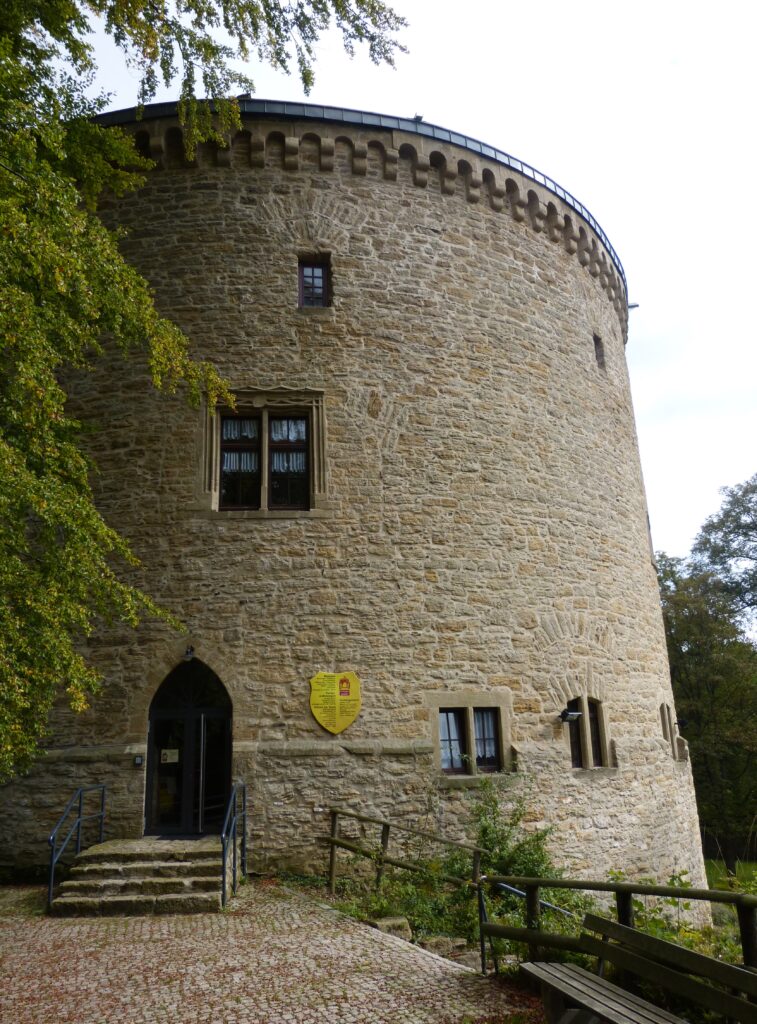
It is 24 meters around (72 feet?) and 6 meters thick, and about 1,000 people could fit inside if they needed protection.
Today it houses a Late Middle Ages museum and there are also a few holiday rental apartments inside it. If I ever visit Goslar again I’d stay there.
Around the other side of the Zwinger is this lovely little pond with half-timbered houses and the Rammelsberg mountain behind it.

This plaque commemorates the site of the former Jew house. Judenhaus was a term coined during the Nazi era for places that Jews were forced to live, usually the last home before deportation to concentration camps.
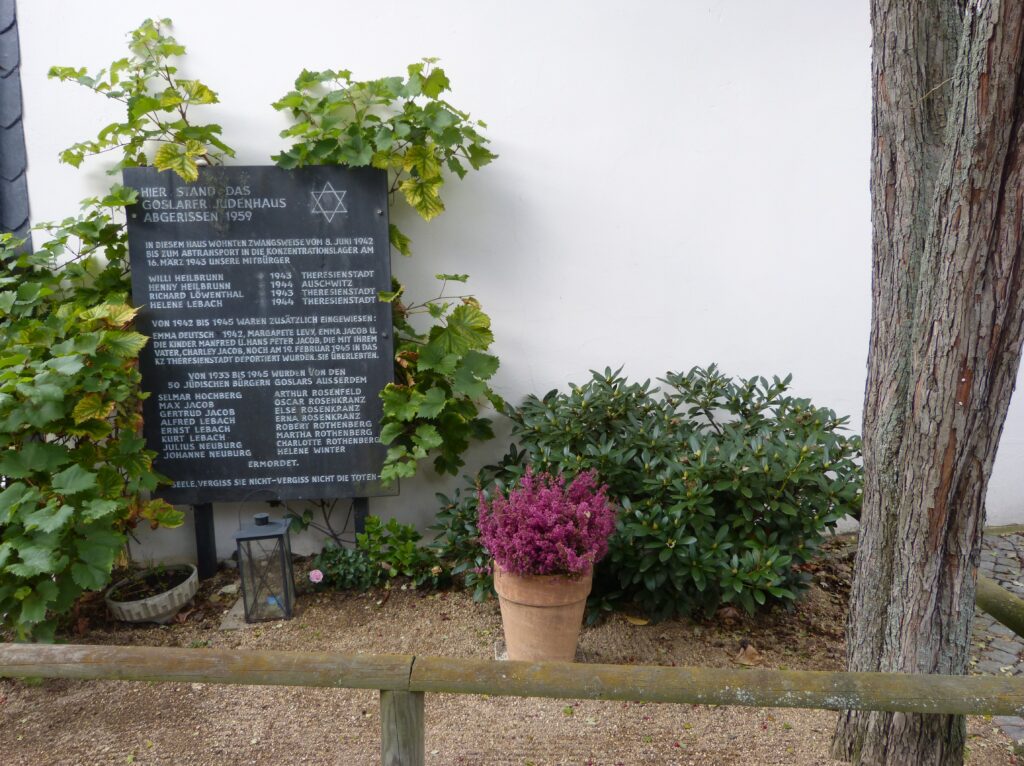
I’ve said this before and I’ll say it again.
One of the reasons we like getting walking tour maps when they’re available from a town’s tourist information office is that they do take you off the beaten path.
If you notice the first photo I posted for this blog, there is not another person in sight.
In this next photo, there is also nobody in sight.

The walking tour – which had 48 points of interest on it, by the way – took us to see that statue of Moritz of Saxony-Place.
He was a famous soldier, officer and a famed military commander who was born in Goslar in 1696 and died in France in 1750.
The little park that the statue is in is just lovely. It’s not all that far from the Market Square, yet there was not a tourist to be seen.
In the vast majority of towns we’ve been to this is the case. Tourists and tour groups tend to stay around the main square and don’t venture very far away.
My recommendation is to get yourself a walking tour map for the next town you visit and see something besides the main tourist sights that everyone else sees.
You’ll see some great things and likely have them all to yourself.
The next destination on the walking tour was the St. Anne’s House.

What that sign says basically is when the garden gate is open, you can (visit?) the St. Anne’s House
Unfortunately, as you can see the garden gate was closed and we couldn’t visit.
I was kind of disappointed for a couple of reasons. One is that the house is the oldest unaltered half-timbered house in Goslar.
Another is that there is a chapel in the house that contains a beautiful Baroque altar as well as a magnificent tapestry. Oh well, maybe next time.
The square and circular towers that you see here were once part of the city’s fortified gate.

They are very well-preserved considering they are from the 13th century.
Remember earlier when I said the walking tour map took us to the statue of Moritz of Saxony-Place and there was nobody else in sight?
Continuing to follow the tour, we entered the Ulrichscher Garden where there was also not another tourist in sight.
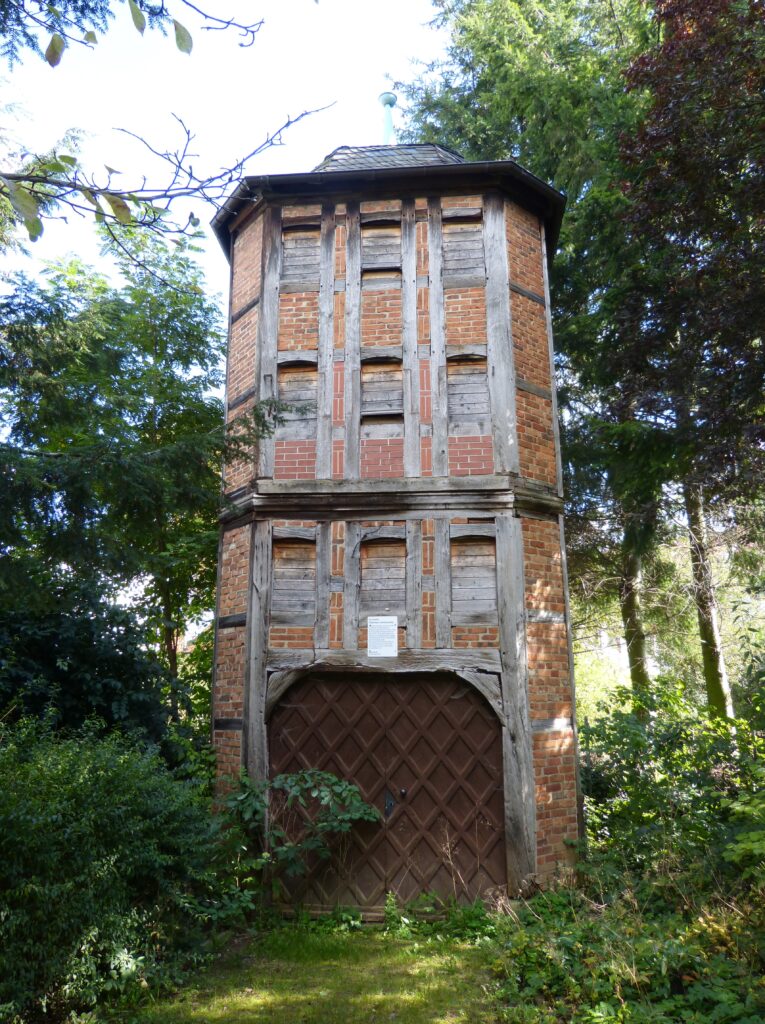
It was a lovely Baroque garden with whimsical statues and the Fledermaus tower you see there. According to the sign, it is a summer residence for bats.
The garden was very close to the market square, so when we reached that again we sat at a table outside a restaurant to have a drink and a bite to eat.
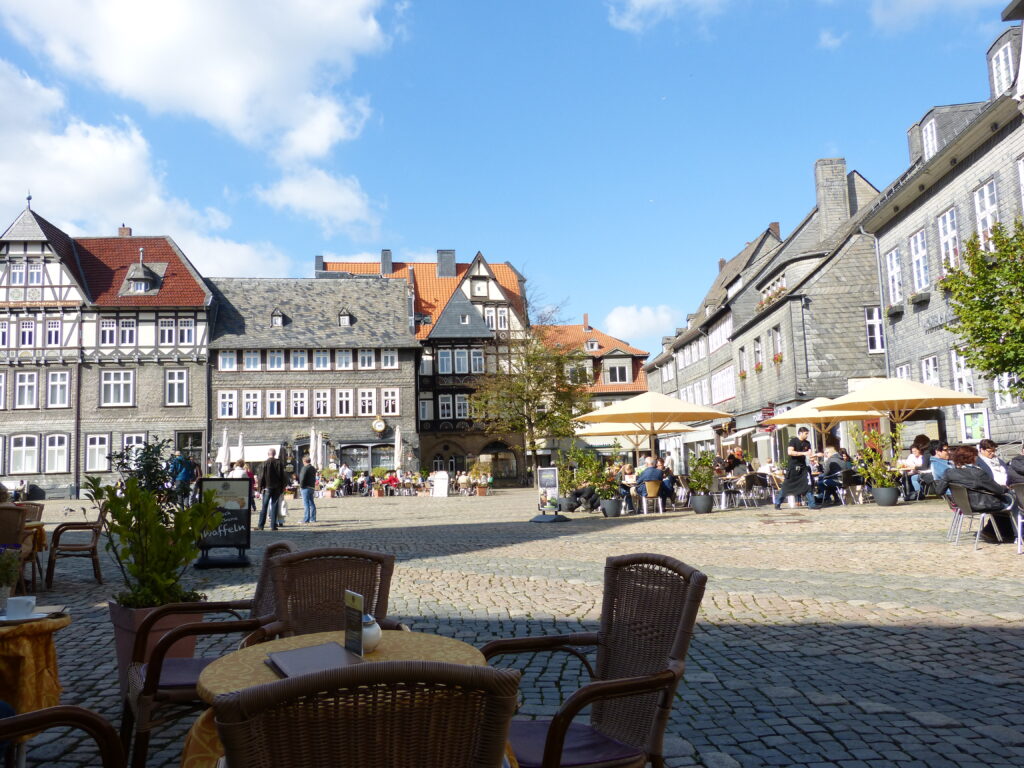
Four times a day, the building to the right in that photo has carillon bells that chime four times a day. A bunch of figures then rotate out of an opening at the top of the building to commemorate 1,000 years of mining in the area. Luckily we had sat down just in time for the show.
This building houses the hotel where we stayed

It’s called the Alte Münze or Old Mint. Part of the building is actual remains from the 15th-century mint. We stayed in a lovely suite and rest of the building was as charming as could be with a small bar, a nice breakfast area and an outdoor courtyard.
When we had visited the town hall earlier in the day, the film we watched explained that there was a town scandal associated with the mint. I can’t find any additional information to verify the story.
This building is the Imperial Palace.
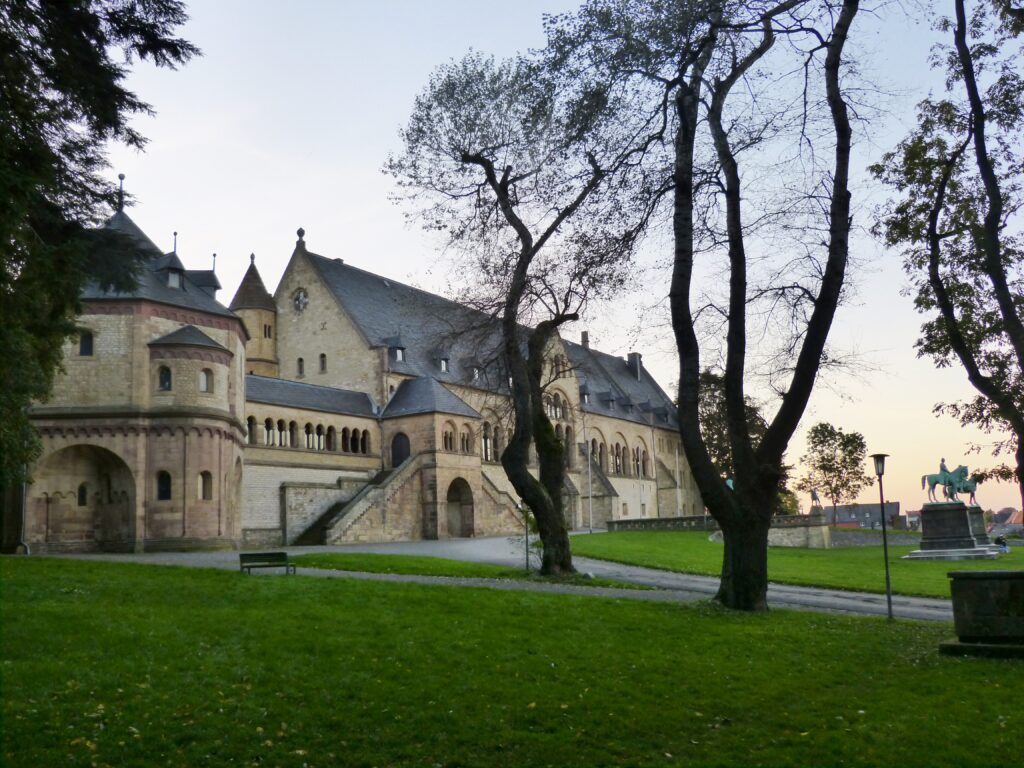
Building of the palace was started in the 11th century by Henry II.
Earlier you read that we saw a little carillon show commemorating the history of mining in Goslar. You’ve also see the Rammelsberg mountain a few times, and that’s where the mining took place.
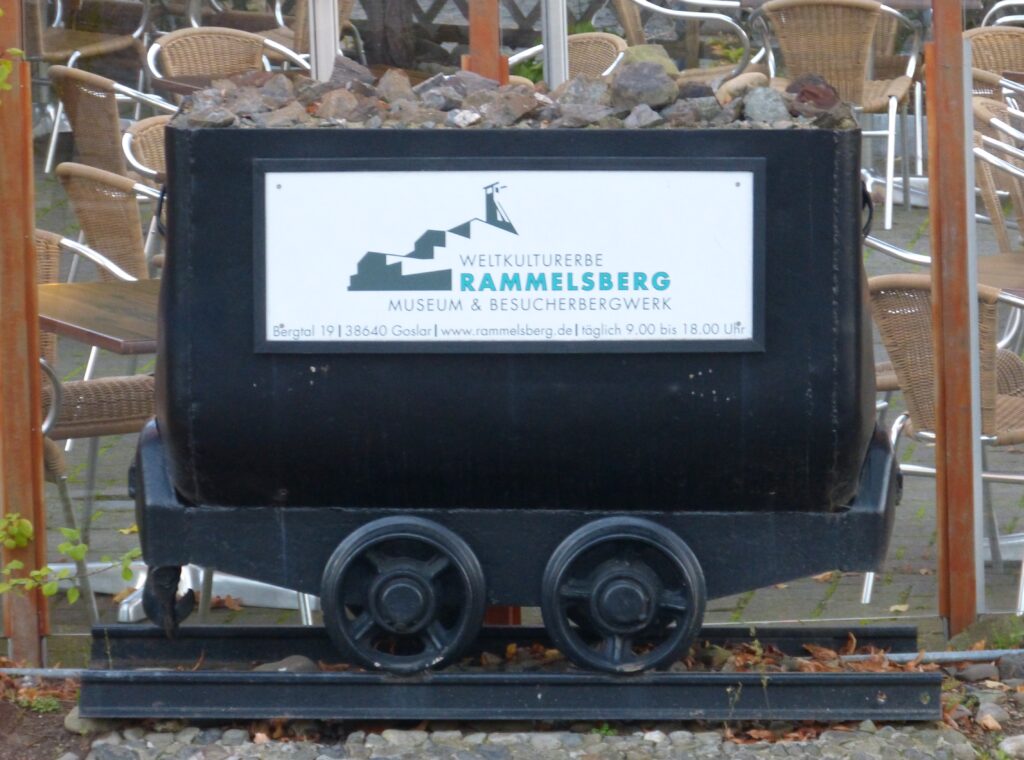
You also read at the beginning of this post that Goslar is part of a UNESCO site. The entire site is called “Mines of Rammelsberg, Historic Town of Goslar and Upper Harz Water Management System”.
After we checked out of our hotel on Sunday, we stopped at the mining museum – the “Mines of Rammelsberg” part of the UNESCO site – that’s advertised on the mine car in the photo above.
You also read earlier mining was an industry in the area for 1,000 years. The mine was actually working for over 1,000 years as of the time it closed in 1998 and there is evidence that ore was extracted from the mountain 3,000 years ago.
Legend has it that back in the 10th century, a knight by the name of Ramm tied up his horse while he was hunting. While waiting, the horse pawed at the ground and uncovered silver ore. The Rammelsberg mountiain was supposedly named after the knight.
In addition to silver, the mountain was also mined for copper, zinc and lead.
There are several different tours you can take at the museum and all of them start in what used to be the changing room area for the mine workers.
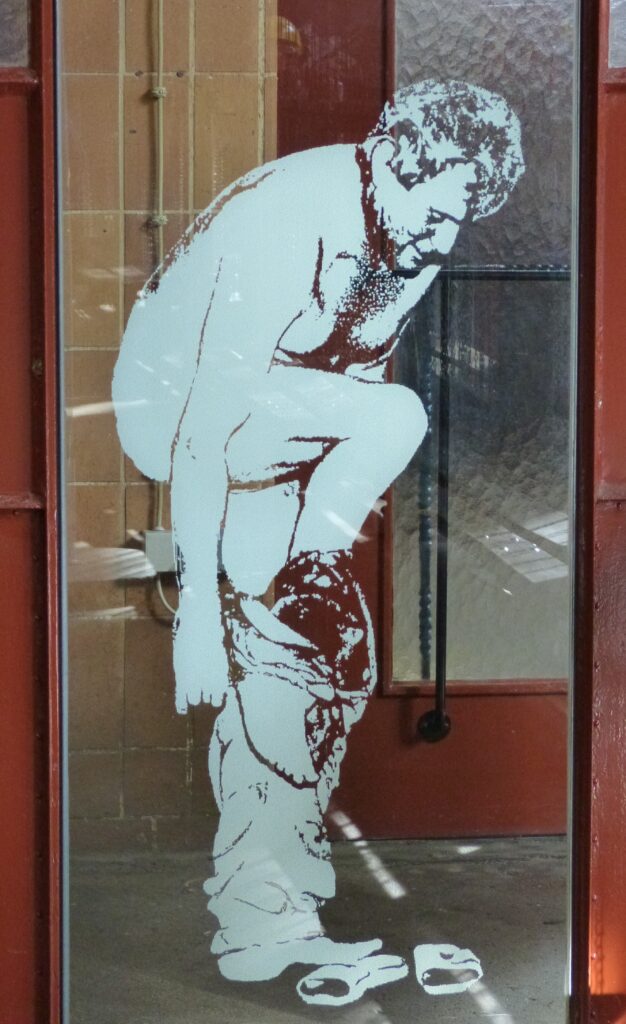
In case it’s not clear to you what happens in a changing room, that helpful picture of a big, hairy man getting changed is there for all to see.
We chose the Mine Train tour and this is what we got to ride in.

Seeing Sean standing next to the train, you can imagine how cramped it is with about 10 adults in each car. Both of us had to sit hunched over in the car.
Everyone on the tour has to wear a hardhat to go down into the former mine.1
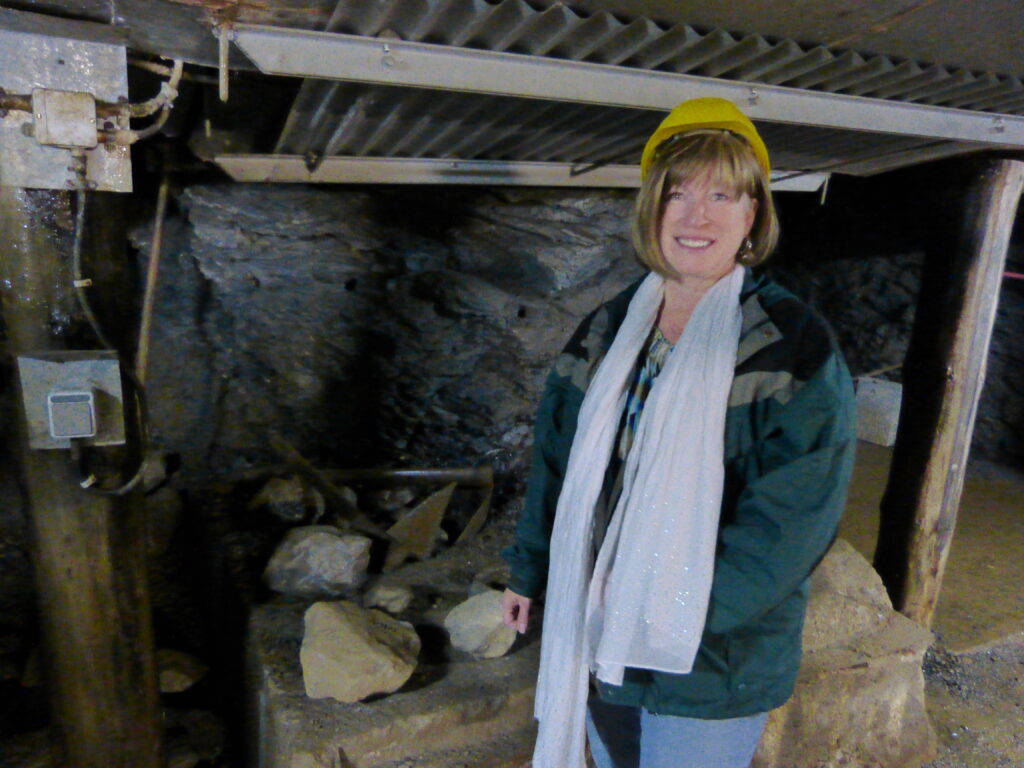
The tour was conducted only in German, but having read up on it a bit we got the gist of things.

The tour lasts about an hour with the guide explaining how the miners worked throughout the ages as technology progressed.
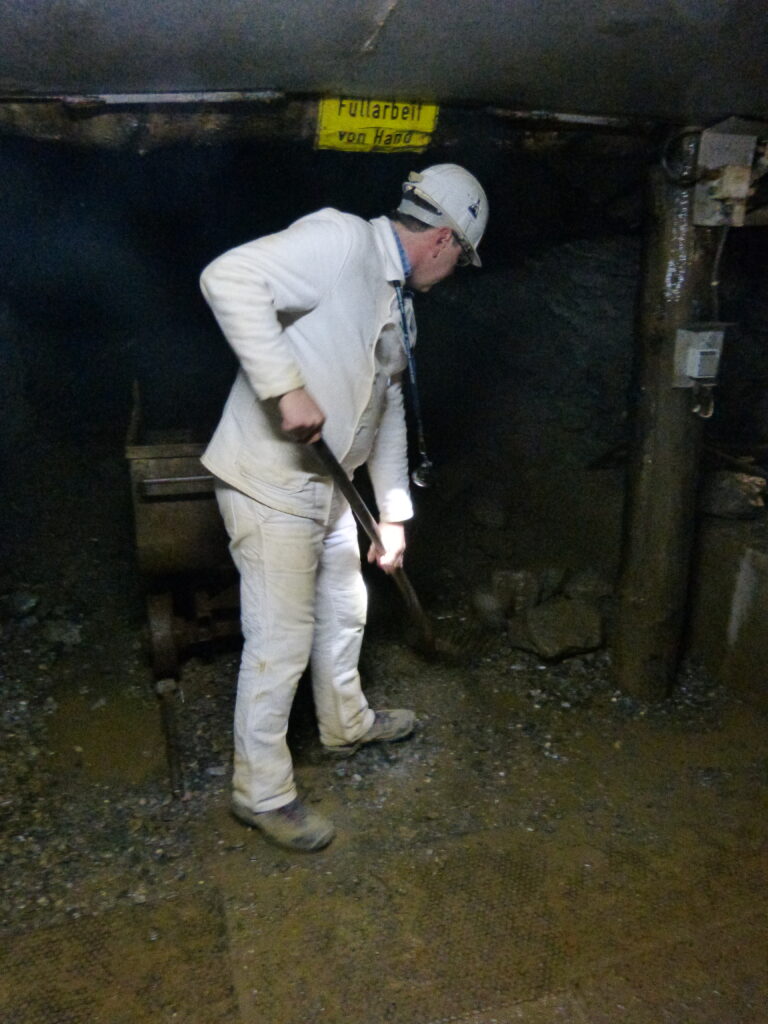
There are several above-ground buildings that you can explore on your own as well. The buildings contain various exhibits, and the gift shop will loan you a free audio guide to provide additional information.

The audio guide was actually pretty cool because all you had to carry around was the headphones. If an exhibit had audio to listen to, you simply had to plug your headphones into the jack and listen to the explanation. The gift shop programs in the appropriate language for you before you start exploring.
One of the exhibits is by the artists Christo and Jeanne-Claude, who were famous for wrapping up landmarks such as the Pont-Neuf bridge in Paris in fabric.

That car transported the last of the ore from Rammelsberg and the work is called “Package On A Hunt”.
One exhibit even mentions the counterfeiters of Goslar that you read about earlier.
There was a lot of information about how dangerous it was to work in the mines. Workers died in various gruesome ways including from mines collapsing, accidental explosions, fire, drowning if the mine got flooded, suffocation, getting crushed to death by falling rock and other horrible methods.
There was also information about this history of mining as well as the social, economic and cultural lives of the miners and their families.
If you are ever in the Harz Mountains area of Germany, I highly recommend a visit to both Goslar and the Rammelsbrg Mine Museum.


